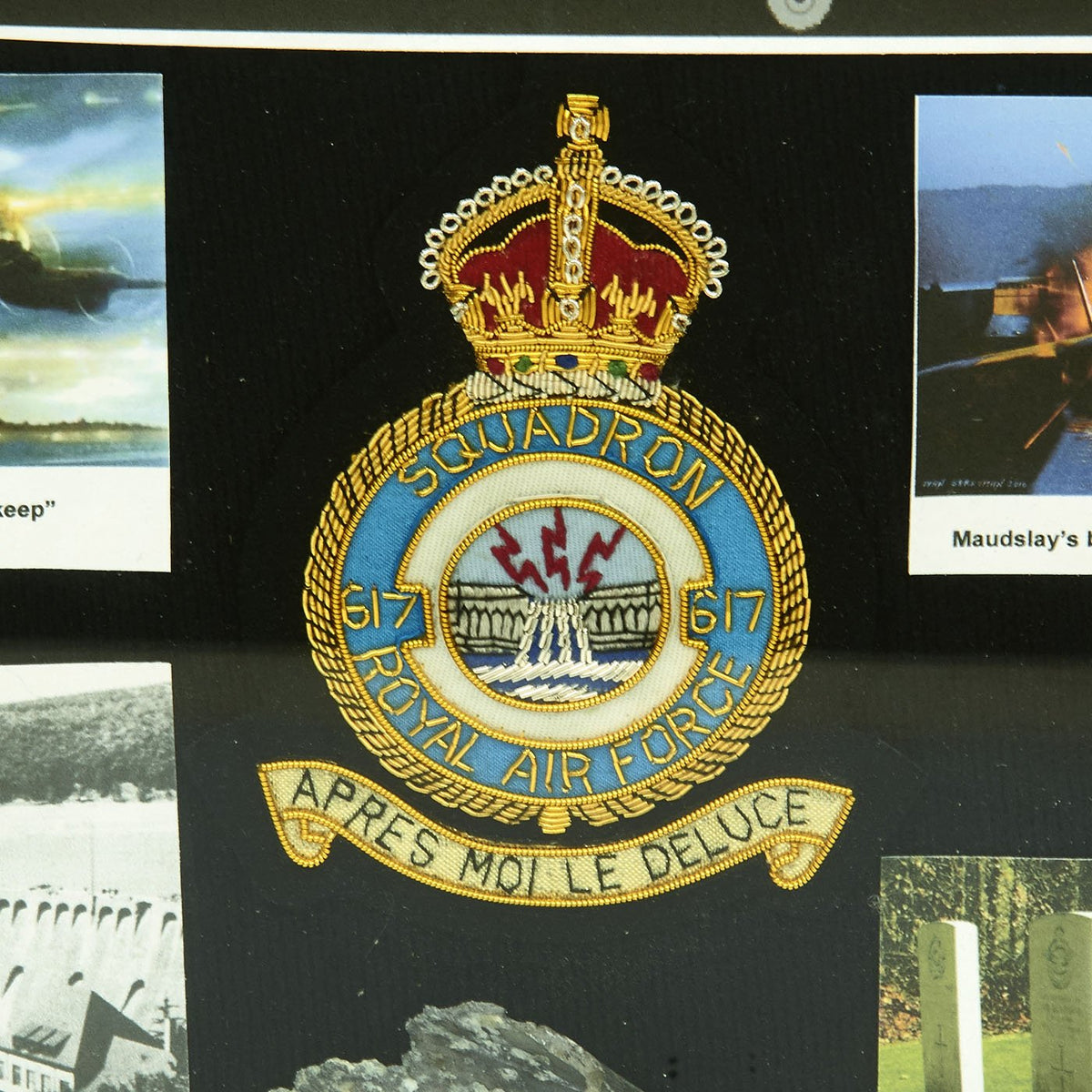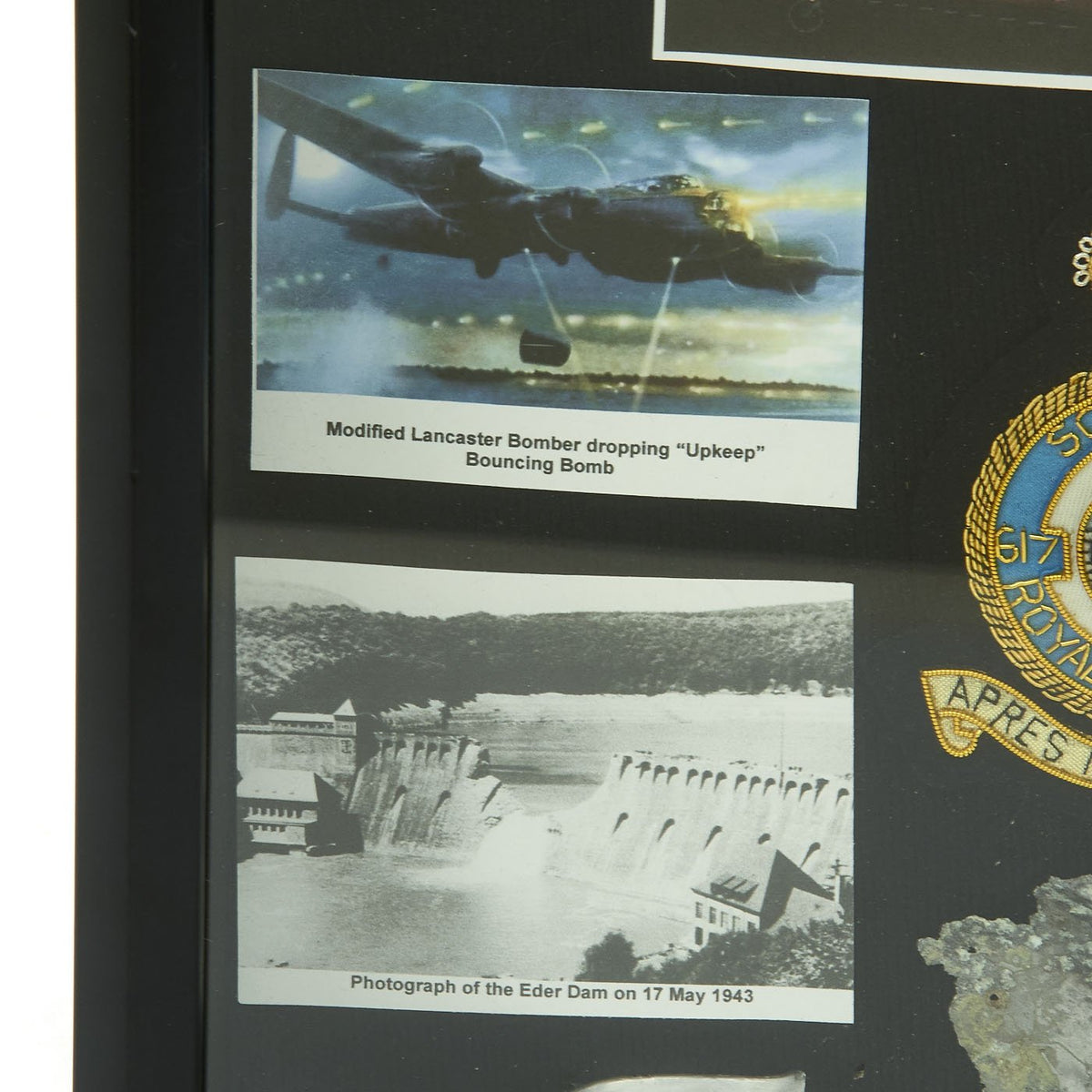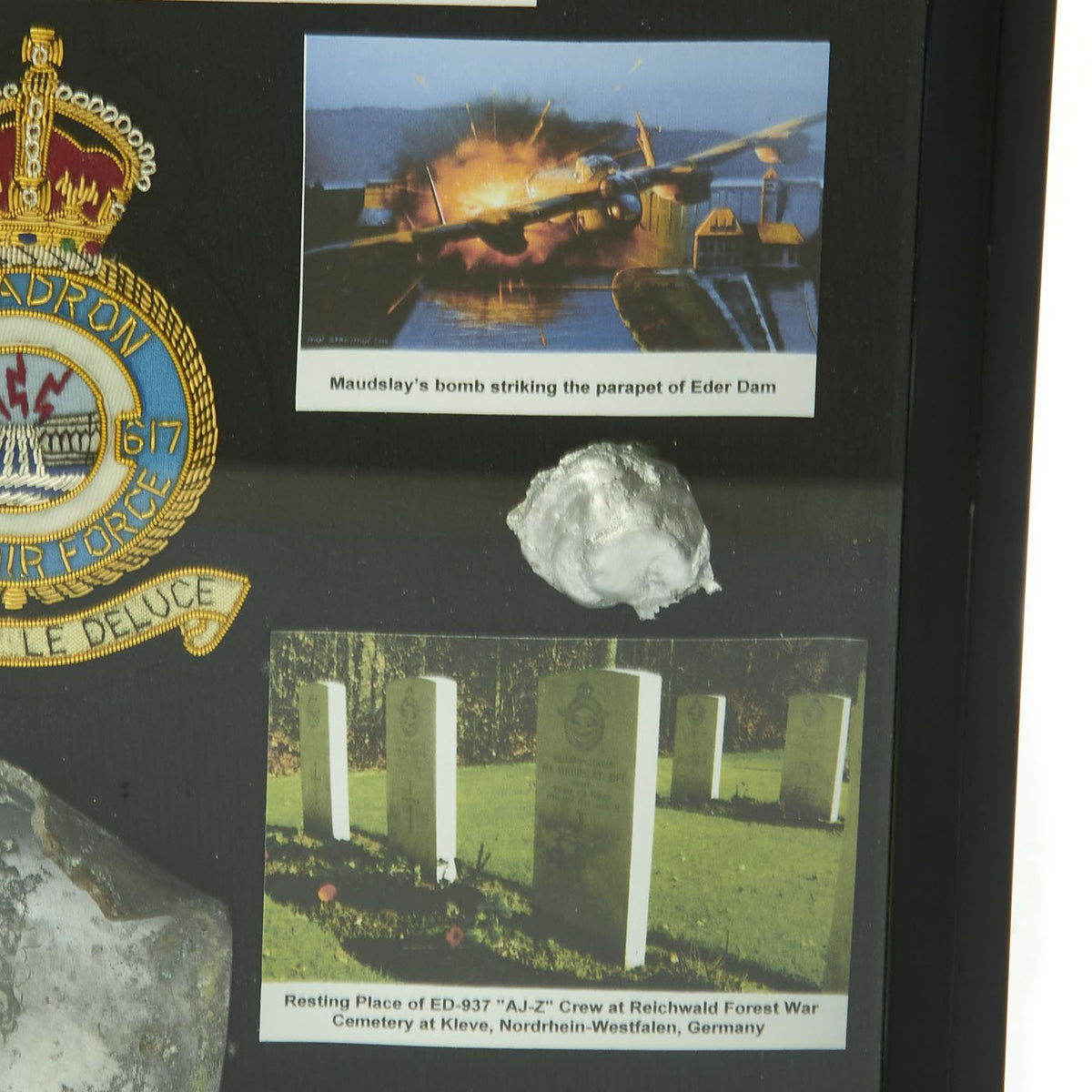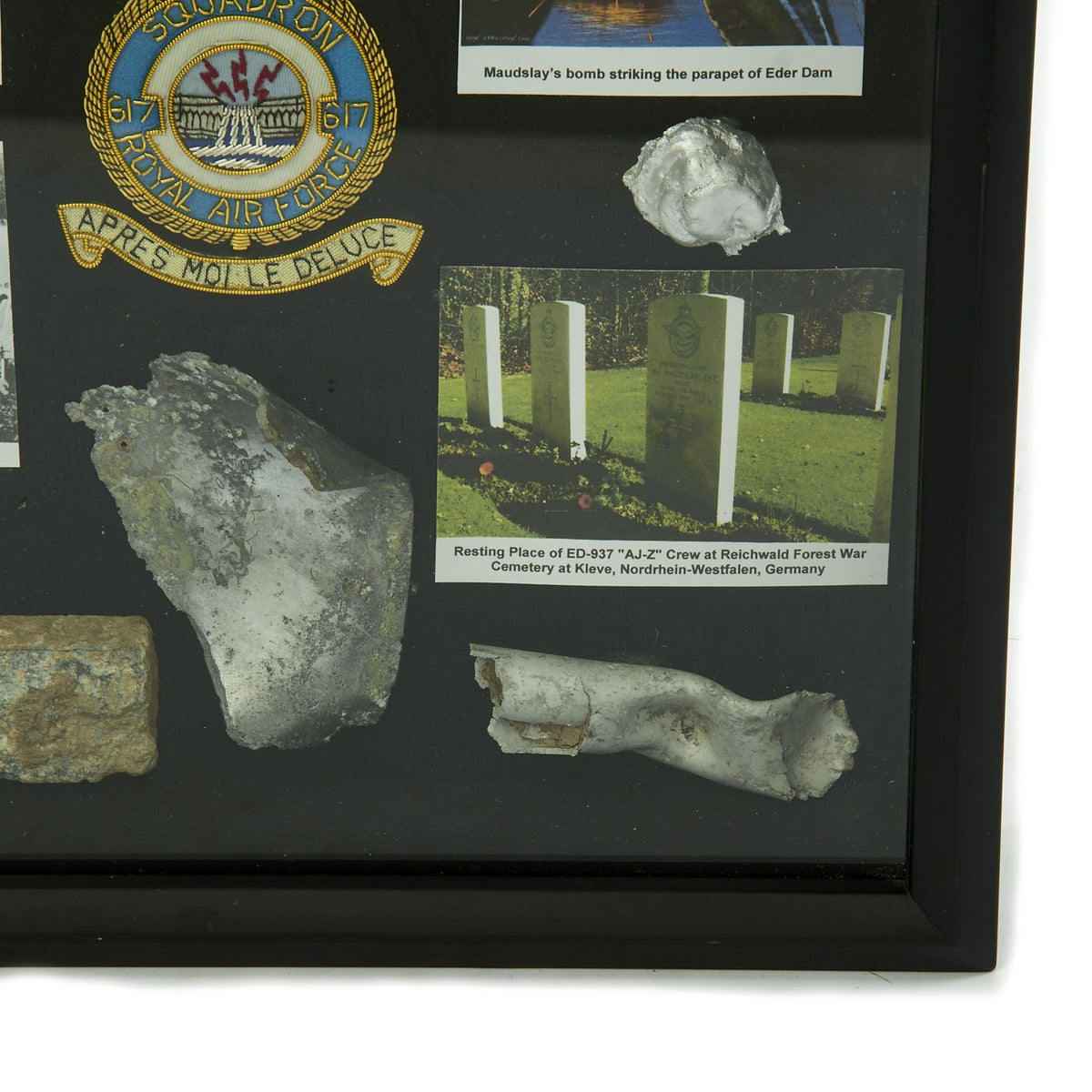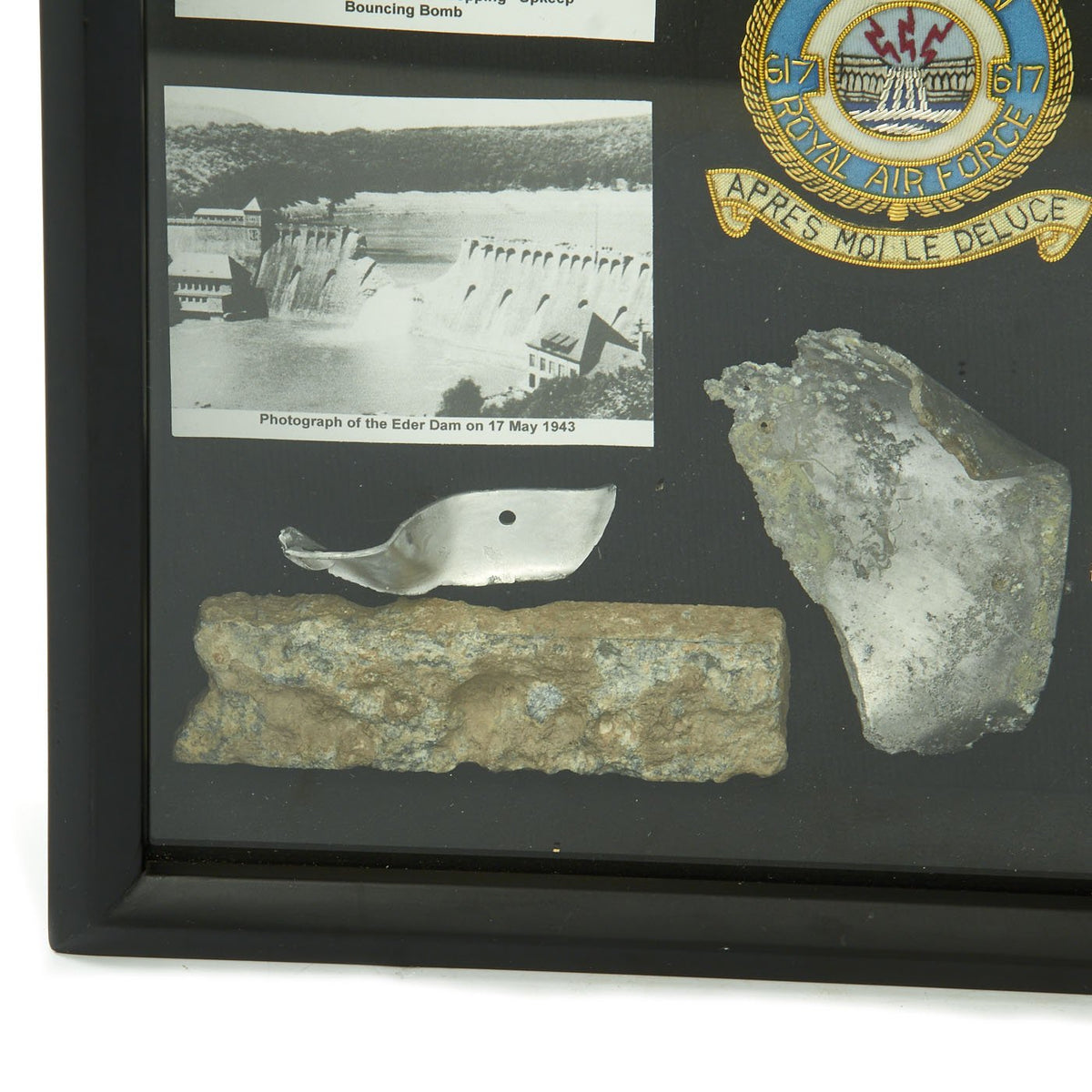Original British WWII Fragments from Crashed R.A.F. Lancaster Dambuster ED-937 “AJ-Z – Operation Chastise Original Items
$ 275,00 $ 110,00
Original Items: One-of-a-kind set. Operation Chastise was an attack on German dams carried out on 16–17 May 1943 by Royal Air Force No. 617 Squadron, later called the Dam Busters, using a purpose-built “bouncing bomb” developed by Barnes Wallis, nicknamed “Upkeep”. These bombs were designed to spin when dropped, bounce over torpedo nets, and then sink down to the bottom of the dam before exploding.
The Möhne and Edersee dams were breached, causing catastrophic flooding of the Ruhr valley and of villages in the Eder valley; the Sorpe Dam sustained only minor damage. Two hydroelectric power stations were destroyed and several more damaged. Factories and mines were also damaged and destroyed. An estimated 1,600 civilians – about 600 Germans and 1,000 mainly Soviet forced labourers – died. Despite rapid repairs by the Germans, production did not return to normal until September.
The first trials were at Chesil Beach in January 1943, which demonstrated that a bomb of sufficient size could be carried by an Avro Lancaster, rather than waiting for a larger bomber such as the Windsor to come into service. Avro Chief Designer Roy Chadwick adapted the Lancaster to remove the mid-upper (dorsal) gun turret to reduce drag, increase speed and save fuel, bearing in mind that a large, ungainly weapon would be suspended below the fuselage. He also worked out the design and installation of controls and gear for the carriage and release of the bomb in conjunction with Barnes Wallis. Thus, the Lancaster “Dambuster” was born.
A major problem for the operation determining the aircraft’s altitude, as the barometric altimeters then in use lacked sufficient accuracy. Two spotlights were mounted, one under the aircraft’s nose and the other under the fuselage, so that at the correct height their light beams would converge on the surface of the water. The crews practised at the Eyebrook Reservoir, near Uppingham, Rutland; Abberton Reservoir near Colchester; Derwent Reservoir; and Fleet Lagoon on Chesil Beach. Wallis’s bomb itself was first tested at the Elan Valley Reservoirs.
The operation took place, but unfortunately it was not entirely successful, mostly due to the extreme difficulty of the mission. There is a nice paragraph inside the frame describing the drop by Dambuster ED-937 and what happened:
Fragments from Dambuster ED-937 “AJ-Z” piloted by Squadron Leader H.E. Maudslay. He released the Upkeep bomb during his second approach on the Eder Dam on 17 May 1943. The weapon was released slightly too late, hitting the crest of the dam and exploding right behind Maudslay’s Lancaster. He had struggled away with a damaged aircraft and started on the return journey, but was shot down by flak at 02:36 at Emmerich. Maudslay and all of his crew died.
Below this are the names and pictures of the 7 crew members who perished, including Maudslay, and under that an illustration of the aircraft, call sign “Z” from the first wave. There are various other printed pictures related to the operation, as well as a very nice embroidered bullion 617th Squadron badge. There is also a picture of the graves of the crew, who rest now in Germany.
Interspersed with these images are fragments recovered from the crash site, most of which are aluminum. They are attached to the fabric backing inside. The case itself measures 16 3/4″ x 12 3/4″ x 2 3/4″, and has is glass glazed. The frame looks to be wood, though it could be composite or metal.
Included with the case are some printed photographs, as well as research material concerning the operation and the plane itself. There is information about the crash site, which can still be visited today. Included is a CD-R with information on it, probably a soft copy of the printed material.
A fantastic set from a daring and ultimately successful operation to damage NSDAP Germany’s infrastructure. Ready to display!
Fast Shipping with Professional Packaging
Thanks to our longstanding association with UPS FedEx DHL, and other major international carriers, we are able to provide a range of shipping options. Our warehouse staff is expertly trained and will wrap your products according to our exact and precise specifications. Prior to shipping, your goods will be thoroughly examined and securely secured. We ship to thousands clients each day across multiple countries. This shows how we're dedicated to be the largest retailer on the internet. Warehouses and distribution centres can be located throughout Europe as well as the USA.
Note: Orders with more than one item will be assigned a processing date depending on the item.
Before shipping before shipping, we'll conduct a thorough inspection of the items you have ordered. Today, the majority of orders will be delivered within 48 hours. The delivery time will be between 3-7 days.
Returns
The stock is dynamic and we cannot completely manage it because multiple stakeholders are involved, including our factory and warehouse. So the actual stock may alter at any time. It's possible that you may not receive your order once the order has been made.
Our policy is valid for a period of 30 days. If you don't receive the product within 30 days, we are not able to issue a refund or an exchange.
You can only return an item if it is unused and in the same state as the day you received it. You must have the item in its original packaging.
Related products
Uncategorized
Uncategorized
Uncategorized
Uncategorized
Armored Burgonet Helmet & Polearm from Scottish Castle Leith Hall Circa 1700 Original Items
Uncategorized
Uncategorized
Uncategorized
Uncategorized
Uncategorized
Uncategorized
Uncategorized
Uncategorized
Uncategorized
Uncategorized
Uncategorized
Armoured Fighting Vehicles of the World: AFVs of World War One (Hardcover Book) New Made Items
Uncategorized
Band of Brothers ORIGINAL GERMAN WWII Le. F.H. 18 10.5cm ARTILLERY PIECE Original Items
Uncategorized
Uncategorized

